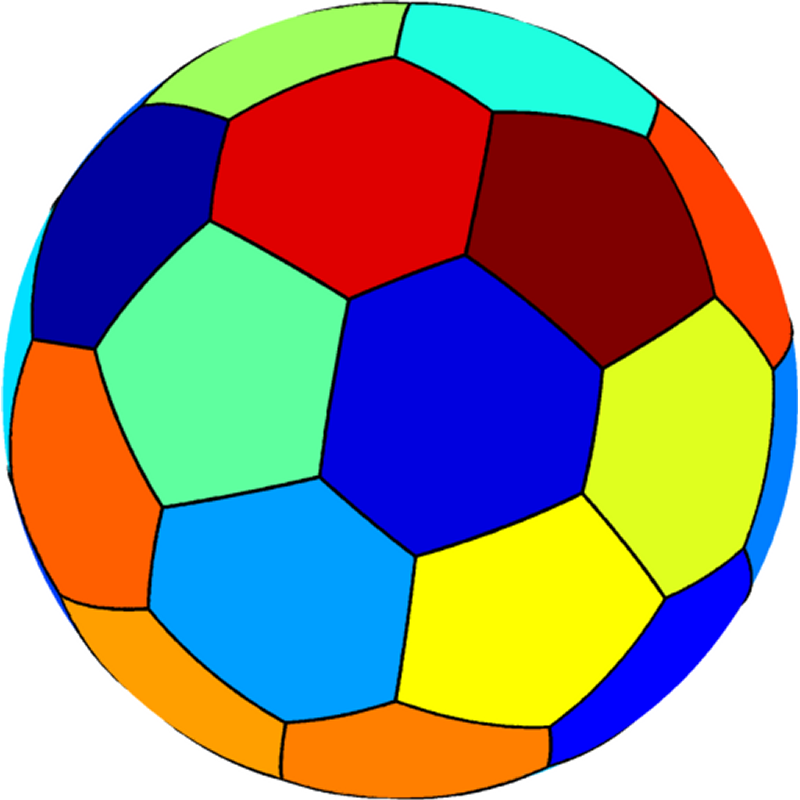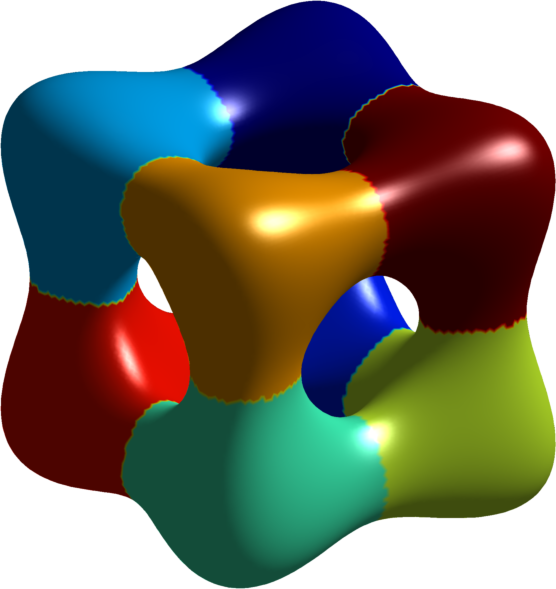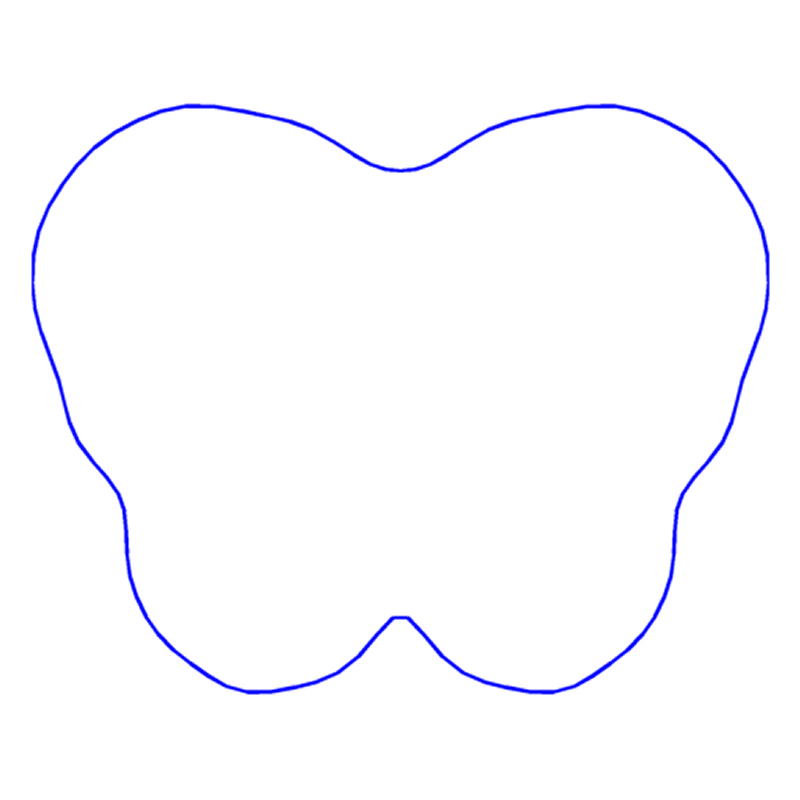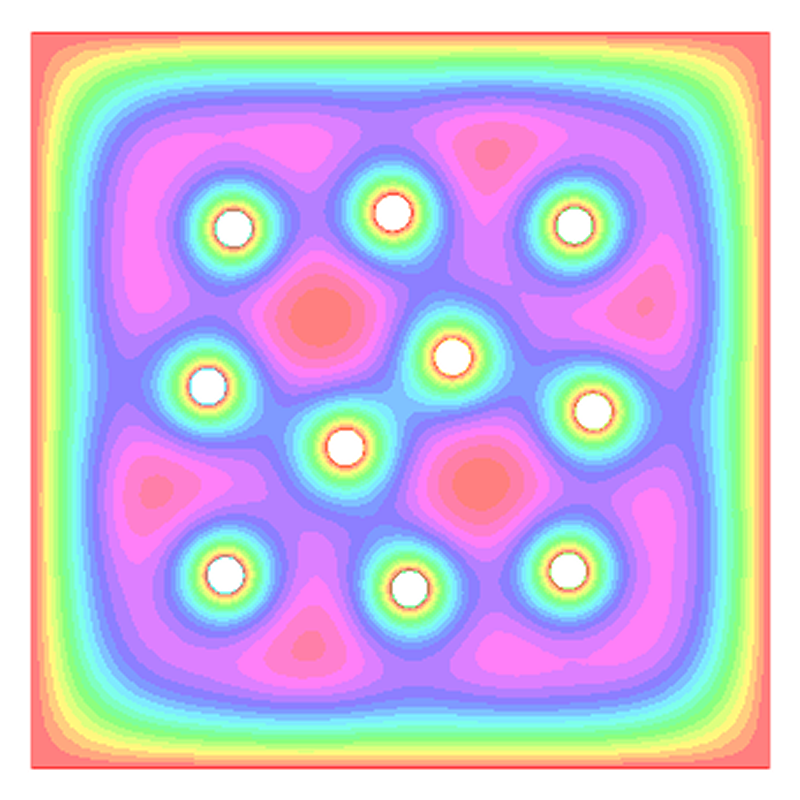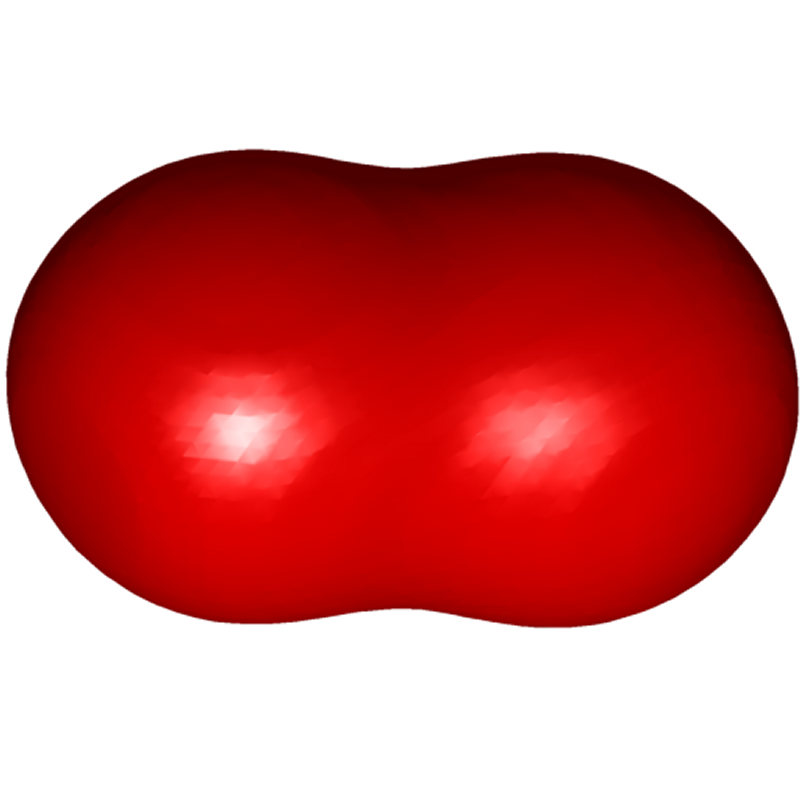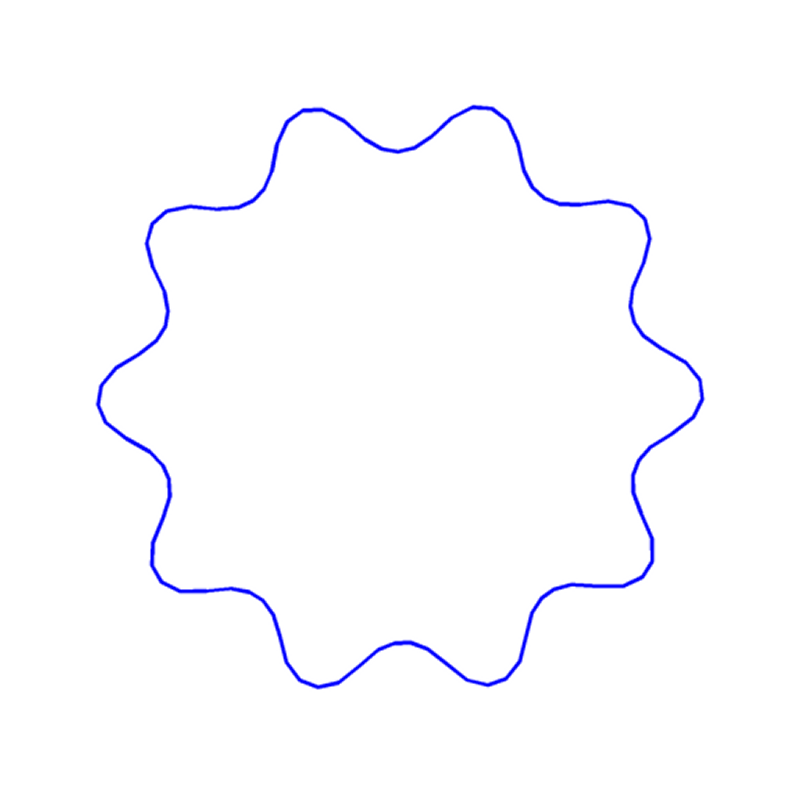Beniamin BOGOSEL
Optimal partitions for an anisotropic perimeter using $\Gamma$-convergence
Recently, E. Oudet has used a variation of Modica-Mortola's theorem in order to study numerically partitions of the 2D and 3D objects into parts of equal volume such that the sum of the perimeters is minimized. The numerical results were interesting. In the 2D case, he obtains the expected results, when they are known (for example, division of an equilateral triangle into two regions of equal area with a minimal length curve). In the periodic case, which is a simulation of a partition of the entire plane, he obtains the famous hexagonal tiling, prescribed by the Honeycomb conjecture (now a theorem, due to Hales)
For a sufficiently regular set $\Omega$, we can define its perimeter by $$Per(\Omega) = \int_{\partial \Omega}1 d\sigma= \int_{\partial \Omega}|\vec n|^2d\sigma,$$ where $\vec n$ is the unit normal vector. From this perspective, classical perimeter does not favor any particular direction in the space. Given a norm $\varphi$ on $\Bbb{R}^N$, which is equivalent to the Euclidean one, we can define an anisotropic perimeter by $$ Per_\varphi(\Omega)= \int_{\partial \Omega}\varphi(\vec n)^2d\sigma.$$ Note that this norm can favor certain directions. For example $\varphi(x)= \sum_{i=1}^N |x_i|$ favors the directions which are collinear with the coordinate axes. We can consider isoperimetric problems with respect to the anisotropic perimeter. The shape which minimizes the anisotropic perimeter corresponding to $\varphi$, under a volume equality constraint, is called the associated Wulff shape. For the example of $\varphi$ given above, the corresponding Wulff shape is a cube.
Since there are variants of Modica-Mortola's theorem, which involve an anisotropic perimeter, we thought it would be interesting to search numerically optimal partitions which minimize the anisotropic perimeter with respect to different functionals $\varphi$.
The $\Gamma$-convergence result can be stated as follows:
Then $F_\varepsilon \stackrel{\Gamma}{\to} F$ for the $L^1(D)^n$ convergence.
Like in other cases, we try to approach minimizers of $F$(optimal partitions) by minimizers of $F_\varepsilon$. Below we present some of the results we obtained.
In the pictures below you can see a comparison between the partitions of a square in the isotropic case, and the anisotropic case corresponding to horizontal and vertical directions. Since the anisotropic partitions seem to be partitions in rectangles, we checked to see if the partitions in rectangles we obtained are indeed optimal. It turns out that the rectangle problem has been completely solved in the following article. All of the rectangle partitions we obtained are optimal.
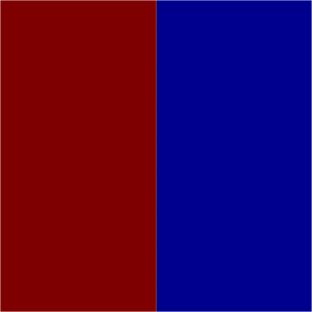 |
 |
 |
 |
 |
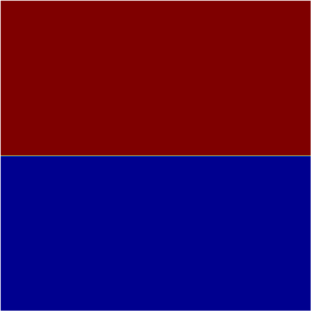 |
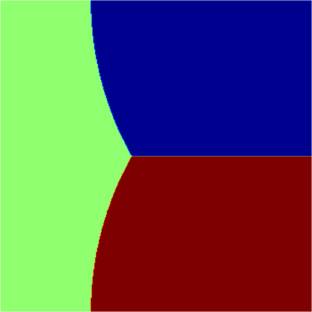 |
 |
 |
 |
 |
 |
 |
 |
 |
 |
 |
 |
| Comparison between the isotropic case (down) and the anisotropic case (up) corresponding to $\varphi(x) = |x_1|+|x_2|$. This anisotropy favorizes the horizontal and vertical directions. |
 |
 |
 |
 |
 |
 |
 |
 |
Created: Dec 2014
